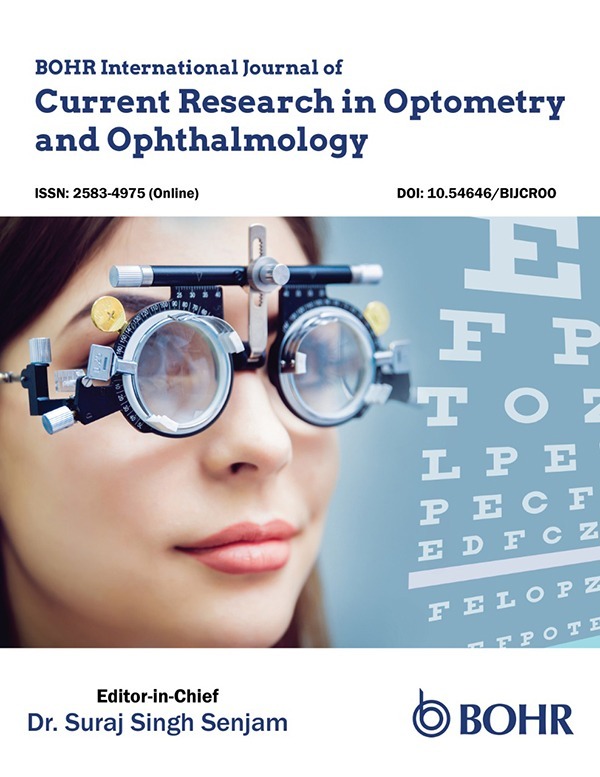Effect of correction of refractive error and threshold estimation in ocular headache patients in a tertiary eye care center
Main Article Content
Abstract
Purpose: Headache is one of the most common symptoms in patients with refractive error. Our study aimed to find the effect of refractive error correction and estimate the threshold of refractive error in patients with ocular headaches in a tertiary eye care center.
Methods: We enrolled patients who came with complaints of headaches. It was a prospective, interventional study. All the patients underwent comprehensive ocular examination that included a detailed headache history, objective and subjective refraction, cycloplegic refraction, Humphrey visual fields test (30-2), cover test, and dilated fundus examination. We excluded uveitis, glaucoma, optic atrophy, papilledema, sinusitis, migraine, dental cavities, and neuropathy patients. We prescribed glasses after the post-mydriatic test. We surveyed via phone call regarding the compliance of spectacle wear and relief of headaches.
Results: Out of the 98 enrolled patients, 67 were female and 31 were male in the age group of 16 to 35. The patients had simple astigmatism (57.14%), simple myopia (15.30%), simple myopic astigmatism (23.46%), and hyperopia (9.18%). The threshold value of dioptric power was −1.25 D, −1.00 D, −0.75 DS/−0.75 DC, and +1.00 D for simple astigmatism, simple myopia, simple myopic astigmatism, and hyperopia, respectively. 86.73% recovered with glasses. Simple astigmatism had the highest recovery rate. Headaches frequently occurred in the frontal (44.89%), followed by temporal (32.65%), parietal (16.32%), occipital, and parietal (11.22%).
Conclusion: Lower degrees of refractive error caused the headache. We reported the threshold values of the refractive error that caused the ocular headache. Correcting the refractive error relieved the headache.
Downloads
Article Details

This work is licensed under a Creative Commons Attribution 4.0 International License.
Authors retain copyright and grant the journal right of first publication with the work simultaneously licensed under a Creative Commons Attribution 4.0 International License that allows others to share the work with an acknowledgment of the work’s authorship and initial publication in this journal.
This has been implemented from Jan 2024 onwards



